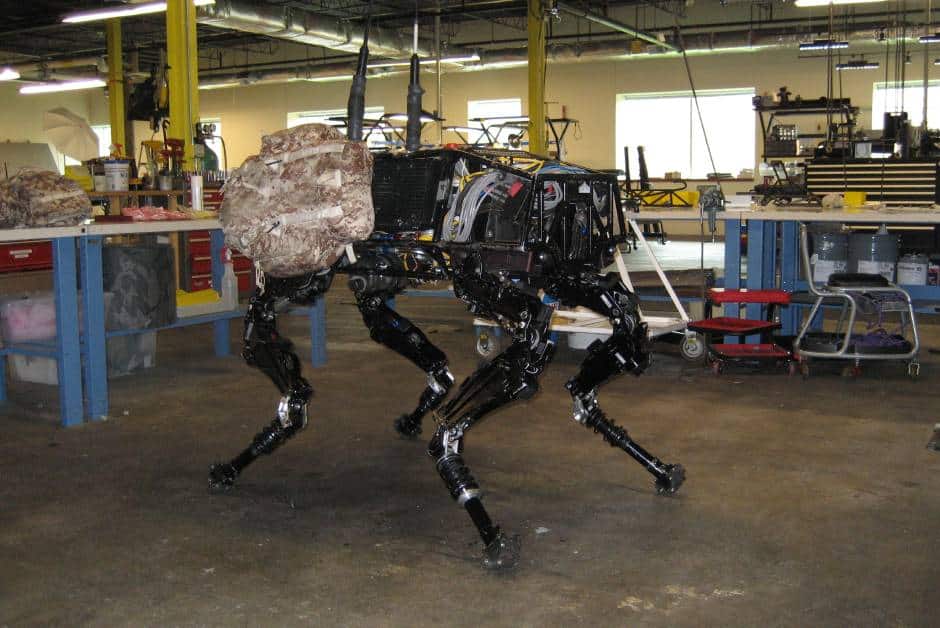Automated technology such as robot dogs are four-legged machines that mirror the shape of a dog. These robot dogs are designed to move around and do various things. Compared to two legged machines or machines on wheels, these robot dogs are superior in aspects of stability and getting across rough terrain that wheels won't be able to. Robot dogs are still being tested in what they can do such as space exploration, military operations, or police operations in dangerous situations where it would be unsafe for humans. With Boston Dynamics leading the robot-dog industry, we'll take a look at the evolution of all Boston Dynamics' military robot dogs.
In 2005, BigDog was invented, which was one of the main breakthroughs in robot-dog technology. BigDog was designed by Boston Dynamics, which is an innovative robotics company leading the way in exploring this new technology. BigDog was Boston Dynamics' first robot-dog, which was 3ft by 2ft and weighed 240 pounds. It was designed to help military soldiers in places where there aren't flat paved roads. This heavy duty robot-dog was built to carry and hike with up to 340 pounds, even on inclines and declines, and on rough terrain. It was designed to help military soldiers in places where there aren't flat paved roads.

In 2011, Boston Dynamics released another military-grade robot-dog named AlphaDog Proto. This was an upgrade from BigDog, now being able to assist soldiers in carrying up to 400 pounds, even on ruggged terrain. It can travel 20 miles in 24 hours without needing to refuel. It's also equipped with a slightly quieter engine, making it even more suitable for military operations.

One year later, Boston Dynamics' military robot-dog was a big upgrade to AlphaDog Proto. It was called LS3, short for Legged Squad Support System. Compared to BigDog, not only could it haul 400 pounds over rugged terrain, but this robot-dog was able to function in hot or cold places. LS3 was a lot quieter, allowing the robot-dog to be used in more operations. It was faster than BigDog too, with a walking speed of 1 to 3 mph, jogging speed at 5mph, and sprinting at 7mph-only on flat surfaces. It could even respond to voice instructions, which made it easier to operate than using controls. Five years later after more refining, this robot was able to operate in actual realistic military training excercises.

Although the LS3 robot was eventually retired due to the repair limitations, future researchers can analyze these experiments and possibly design a better version.
